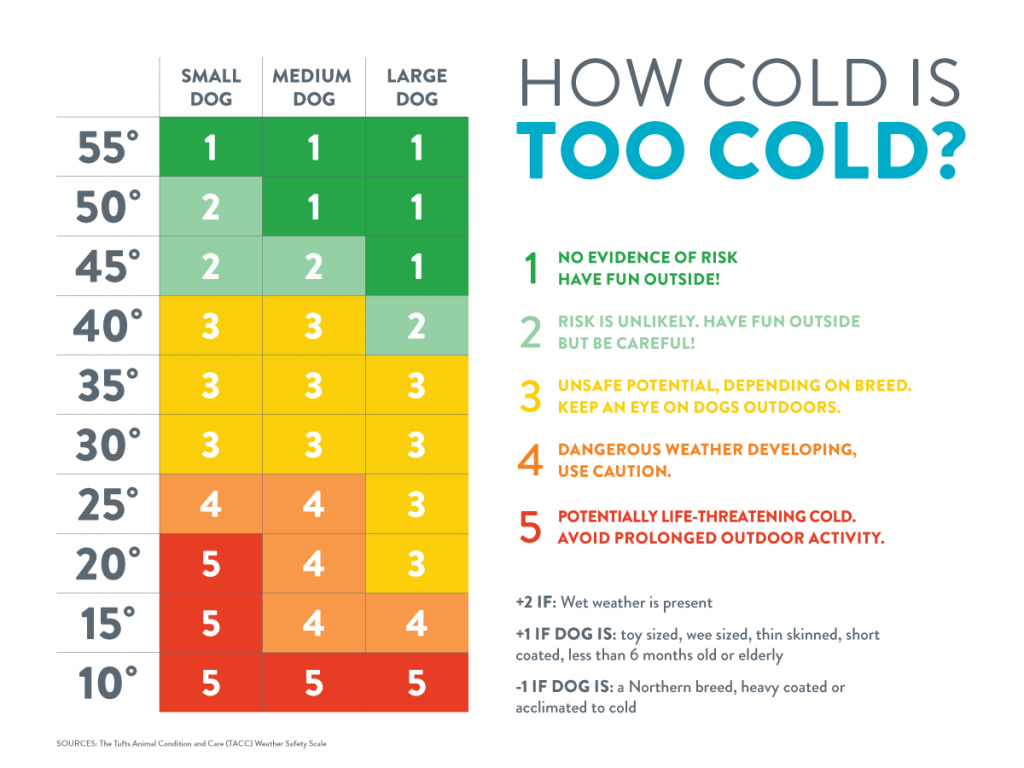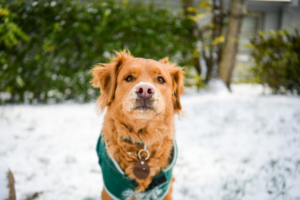How Cold Is Too Cold for Dogs?

Many pet parents are aware that regular exercise and mental stimulation are key factors in contributing to a healthy and happy pup, but what about in the winter months? With temperatures dipping to record lows across the nation this winter, it is important for pet parents to be aware of how cold is too cold for their pup.

Here is a guide to keeping your pup safe during frigid temperatures:
All dogs are unique:
Just like people, dogs have different tolerances when it comes to the cold. One pup may be overjoyed to run around in the snow, while another may not even want to set foot outdoors. What are some elements that affect how dogs tolerate the cold?
Coat Type: Pups with thick, double-layered coats tolerate cold temperatures very well, such as Siberian Huskies, German Shepherds and Samoyeds. These breeds generally originate from colder climates which allow them to thrive in frigid temperatures. On the other hand, pups with short, thin coats such as Greyhounds and Chihuahuas have a more difficult time in cold weather.
Size: Small dogs and toy breeds tend to get colder more easily. They lose body heat much quicker than larger pups, especially when in contact with snow. When smaller pups go out into the cold, their chest can easily be submerged in deeper snow, which will cool down their body temperature and make them cold and wet.
Weight: Body fat is a good insulator for pups, which makes thinner dogs more susceptible to the cold. However, trying to fatten up your dog to keep them warm in the winter could pose much greater health risks to your furry friend.
Age and Health: Healthy dogs in their prime are able to tolerate the cold temperatures better than those dealing with any health issues. Pups dealing with any health issues have weaker immune systems which can make it more difficult for them to keep warm in frigid weather. Give these pups special assistance with a doggie coat or scarf.

Warning signs:
When enjoying the winter weather with your furry friend, look out for these signs that your pup has had enough:
Whining/barking: While some pups are more vocal than others, if your dog barks or whines at you while making eye contact, this could be a sign that they have had enough.
Pausing: If your furry friend stops walking, playing or moving, this may be a sign that they are too cold and need to go inside. If they lift up a paw while standing still, they may have balls of ice or snow between the pads of their paws.
Shivering: This is an obvious sign that your pup is too cold.
Anxiety: Many pups gets anxious when they are too cold and can begin acting fearful and nervous. If your pup tries to jump onto your legs, this may indicate they want to be held and should be a sign that it is time to go home. The anxiety could also be expressed with barking and whining.
Overall, don’t hibernate your pup just because it is cold but rather get to know your furry friends’ cold threshold. The best way to monitor your pup in cold temperatures is to keep a close eye on their behavior. If you notice any signs that they might be in discomfort by shivering, whining, slowing down, acting anxious, it is time to head indoors.
Alternately, if you want your dog to get plenty of exercise and stay comfortable during cold weather, consider placing him at an indoor doggie daycare like Dogtopia. We have climate-controlled playrooms featuring a safe, sanitary rubberized floors that are designed to be gentle on their paws and joints. Your pup will enjoy hours of exercise and play, no matter the weather outside. Find a location near you.









